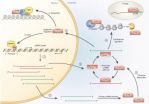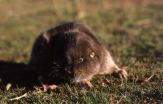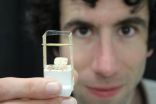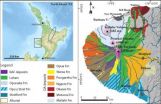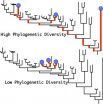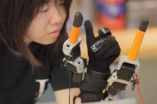(Press-News.org) Non-coding RNAs represent one of the most exciting aspects of current biomedical research. Non-coding RNAs include long non-coding RNAs (lncRNAs) which are generally longer than 200 nucleotides (nt) and small non-coding RNAs (sncRNAs) that are mostly 20-35 nt. Among sncRNAs, microRNAs (miRNAs) and small interfering RNAs (siRNAs) are commonly 21 nt in length, and both specifically bind to the AGO subfamily of the ARGONAUTE (AGO)/PIWI family proteins. PIWI-interacting RNAs (piRNAs), which are defined by their specific binding to the PIWI subfamily of AGO/PIWI family proteins, are mostly 24-32 nt in length. The piRNAs exist, in millions of species, in a multicellular organism and are most abundant in the germline. Furthermore, piRNAs correspond to all types of genomic sequences such as gene-coding and intergenic regions. These two features endow piRNAs with a salient role in regulating gene expression during germline development.
These fascinating features of piRNAs are now reviewed in an article entitled "PIWI proteins and their interactors in piRNA biogenesis, germline development and gene expression" in the Beijing-headquartered journal National Science Review. The article includes an introduction to PIWI proteins, the major PIWI-interactors, and their roles in piRNA biogenesis. The review also covers the regulatory function of the PIWI-piRNA pathway in the germline and in the recently reported somatic tissues.
Haifan Lin, the corresponding author of the article, is a professor of cell biology, of genetics and of reproductive sciences at Yale University, and is the director of the Yale Stem Cell Center. Co-author Hsueh-Yen Ku is a post-doctoral research fellow at Yale.
"Current research also provides evidence that PIWI proteins and piRNAs … mediate novel mechanisms of epigenetic programming, DNA rearrangements, mRNA turnover, and translational control both in the germline and in the soma," the co-authors state in the National Science Review article. "These new discoveries begin to reveal an exciting new dimension of gene regulation in the cell."
PIWI proteins have been demonstrated to be essential for germline development across species.
PIWI mutations in Drosophila, C. elegans, mice, and zebrafish cause gametogenic defects such as failure in germline establishment, loss of germline stem cells (GSCs), meiotic arrest, and blockage in spermiogenesis, all of which lead to sterility. Recent studies have identified PIWI-interacting proteins, including many members of the TUDOR protein family, and have revealed that these PIWI-interactors exhibit similar mutant phenotype as piwi.
Furthermore, PIWI proteins and these PIWI-interactors are required for the primary pathway and/or the ping-pong cycle of piRNA biogenesis. Because piRNAs are derived from the RNA transcripts of transposons, protein-coding genes, and specific intergenic loci, piRNAs are thought to act as sequence-specific guides of PIWI proteins to regulate the expression of genes and transposons at both transcriptional and post-transcriptional levels (see figure below).
Recent efforts in studying the piRNA pathway in non-germline tissues such as neurons and cancer cells have led to the discovery of PIWI somatic funcitons. Therefore, the scope of PIWI-piRNA studies has been significantly expanded from the germline to the soma, with a focus on not only transposon silencing but also gene regulation during normal development and tumoriogenesis.
INFORMATION:
Current work in Haifan Lin's lab at Yale University on PIWI proteins and piRNAs is supported by the National Institutes of Health (DP1CA174418 and R01HD42012), the G. Harold & Leila Mathers Foundation, and an Ellison Medical Foundation Senior Scholar Award to Haifan Lin.
The National Science Review is the first comprehensive scholarly journal released in English in China that is aimed at linking the country's rapidly advancing community of scientists with the global frontiers of science and technology. The journal also aims to shine a worldwide spotlight on scientific research advances across China.
See the article:
Hsueh-Yen Ku and Haifan Lin
PIWI proteins and their interactors in piRNA biogenesis, germline development and gene expression
Natl Sci Rev (June 2014) 1 (2): 205-218
http://nsr.oxfordjournals.org/content/1/2/205.full
PIWI proteins and piRNAs regulate genes in the germline and beyond
2014-07-18
ELSE PRESS RELEASES FROM THIS DATE:
'Support' cells in brain play important role in Down syndrome
2014-07-18
(SACRAMENTO, Calif.) – Researchers from UC Davis School of Medicine and Shriners Hospitals for Children – Northern California have identified a group of cells in the brain that they say plays an important role in the abnormal neuron development in Down syndrome. After developing a new model for studying the syndrome using patient-derived stem cells, the scientists also found that applying an inexpensive antibiotic to the cells appears to correct many abnormalities in the interaction between the cells and developing neurons.
The findings, which focused on support cells ...
Four new species of tuco-tucos identified from Bolivia
2014-07-18
Lincoln, Neb., July 18, 2014 -- A research team led by Scott Gardner of the University of Nebraska-Lincoln has identified four new species of Ctenomys, a genus of gopher-like mammal found throughout much of South America.
Commonly called tuco-tucos, the burrowing rodents range from 7 to 12 inches long and weigh less than a pound. They demonstrate the broad range of biological diversity in the lowlands and central valleys of Bolivia, where all four new species were found, Gardner said.
It is very rare to identify a new species of mammal, said Gardner, director of the H.W. ...
New material puts a twist in light
2014-07-18
Scientists at The Australian National University (ANU) have uncovered the secret to twisting light at will. It is the latest step in the development of photonics, the faster, more compact and less carbon-hungry successor to electronics.
A random find in the washing basket led the team to create the latest in a new breed of materials known as metamaterials. These artificial materials show extraordinary properties quite unlike natural materials.
"Our material can put a twist into light – that is, rotate its polarisation – orders of magnitude more strongly than natural materials," ...
In alcohol abusers, fish oil may reduce risk of neurodegeneration and ensuing dementia
2014-07-18
MAYWOOD, Ill-- Omega-3 fish oil might help protect against alcohol-related neurodamage and the risk of eventual dementia, according to a study published in the journal PLOS ONE.
Many human studies have shown that long-term alcohol abuse causes brain damage and increases the risk of dementia. The new study found that in brain cells exposed to high levels of alcohol, a fish oil compound protected against inflammation and neuronal cell death.
The study was conducted by Michael A. Collins, PhD, Edward J. Neafsey, PhD, and colleagues at Loyola University Chicago Stritch ...
Weight management program also reduces depression among black women
2014-07-18
DURHAM, N.C. -- An intervention program aimed at helping obese women maintain their weight without adding pounds also significantly reduced depression in nearly half the participants, according to a new study from Duke University.
The study was conducted with 185 low-income black women ages 25-44, each with a body mass index (BMI) of 25 to 35, who were receiving primary care at five community health centers in central North Carolina.
The program used software built by Duke researchers that personalized a weight-gain prevention intervention called the Shape Program for ...
Catastrophic debris avalanches -- a second volcanic hazard
2014-07-18
Boulder, Colo., USA – Volcanic hazards aren't limited to eruptions. Debris avalanche landslides can also cause a great deal of damage and loss of life. Stratovolcanoes, with their steep, conical shapes made up of lava and unconsolidated mixed materials, can reach a critical point of instability when they overgrow their flanks. This leads to partial collapse, and the product of this slope failure is a large-scale, rapid mass movement known as a catastrophic landslide or debris avalanche.
In a matter of minutes, a debris avalanche can drastically modify the shape and nature ...
Bowel cancer breakthrough may benefit thousands of patients
2014-07-18
Researchers at Queen's University have made a significant breakthrough that may benefit patients with bowel cancer.
Dr Sandra van Schaeybroeck and her team have discovered how two genes cause bowel cancer cells to become resistant to treatments used against the disease. The research, which was funded by Cancer Research UK, was published this month in the prestigious international journal Cell Reports.
The activity of the two genes, called MEK and MET, was uncovered when the researchers looked at all the different pathways and interactions taking place in bowel cancer ...
Scientists enlist big data to guide conservation efforts
2014-07-18
Despite a deluge of new information about the diversity and distribution of plants and animals around the globe, "big data" has yet to make a mark on conservation efforts to preserve the planet's biodiversity. But that may soon change.
A new model developed by University of California, Berkeley, biologist Brent Mishler and his colleagues in Australia leverages this growing mass of data – much of it from newly digitized museum collections – to help pinpoint the best areas to set aside as preserves and to help biologists understand the evolutionary history of life on Earth. ...
A new measure of biodiversity
2014-07-18
A new approach to measuring biodiversity has uncovered some biologically important but currently unprotected areas in Western Australia, while confirming the significance of the world heritage listed Wet Tropics rainforests in the country's north-east.
In a paper published yesterday (Friday 18 July) in Nature Communications, scientists from CSIRO, University of California, University of Canberra, the Australian Tropical Herbarium at James Cook University and University of New South Wales applied the new method to Australia's iconic Acacia.
The genus Acacia includes ...
Getting a grip on robotic grasp
2014-07-18
CAMBRIDGE, MA -- Twisting a screwdriver, removing a bottle cap, and peeling a banana are just a few simple tasks that are tricky to pull off single-handedly. Now a new wrist-mounted robot can provide a helping hand — or rather, fingers.
Researchers at MIT have developed a robot that enhances the grasping motion of the human hand. The device, worn around one's wrist, works essentially like two extra fingers adjacent to the pinky and thumb. A novel control algorithm enables it to move in sync with the wearer's fingers to grasp objects of various shapes and sizes. Wearing ...
